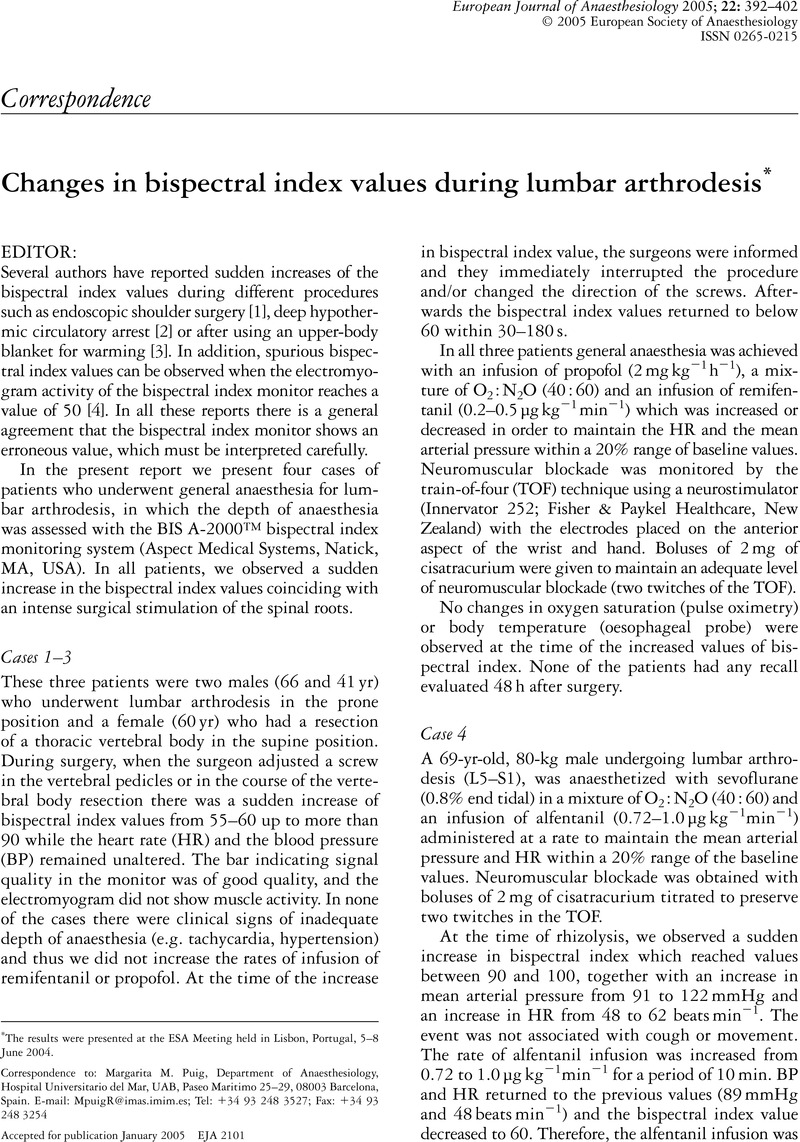Crossref Citations
This article has been cited by the following publications. This list is generated based on data provided by Crossref.
Michalek, Pavel
Doherty, John T.
and
Vesela, Michaela Michalkova
2009.
Anesthetic management of a child with Langer-Giedion (TRPS II) syndrome.
Journal of Anesthesia,
Vol. 23,
Issue. 3,
p.
456.
Rué, Marjory
Lüdecke, Hermann-Josef
Sibon, Igor
Richez, Christophe
Taine, Laurence
Foubert-Samier, Alexandra
Arveiler, Benoit
Schaeverbeke, Thierry
Lacombe, Didier
Tison, François
and
Goizet, Cyril
2011.
Rheumatologic and neurological events in an elderly patient with tricho-rhino-phalangeal syndrome type I.
European Journal of Medical Genetics,
Vol. 54,
Issue. 4,
p.
e405.
Kumar, Kanil R.
Dehran, Maya
Rangasamy, Valluvan
and
Govindarajan, Srinivasa R.
2013.
Unanticipated subglottic stenosis complicating airway management of a child with Langer–Giedion syndrome.
Pediatric Anesthesia,
Vol. 23,
Issue. 10,
p.
968.
Tasic, Velibor
Gucev, Zoran
Ristoska-Bojkovska, Nadica
Janchevska, Aleksandra
and
Lüdecke, Hermann-Josef
2014.
Tricho-rhino-phalangeal syndrome in a 13-year-old girl with chronic renal failure and severe growth retardation.
Renal Failure,
Vol. 36,
Issue. 4,
p.
619.
Esmaeilzadeh, Sarvie
D’Souza, Ryan S.
Stewart, Thomas M.
and
Sexton, Matthew A.
2020.
Urgent Airway Management and Postoperative Complications in a Patient with Trichorhinophalangeal Syndrome.
Case Reports in Anesthesiology,
Vol. 2020,
Issue. ,
p.
1.
BİRİCİK, Ebru
2023.
Zor Hava Yoluna Neden Olabilen Pediyatrik Sendromlar.
Cukurova Anestezi ve Cerrahi Bilimler Dergisi,
Vol. 6,
Issue. 2,
p.
366.





